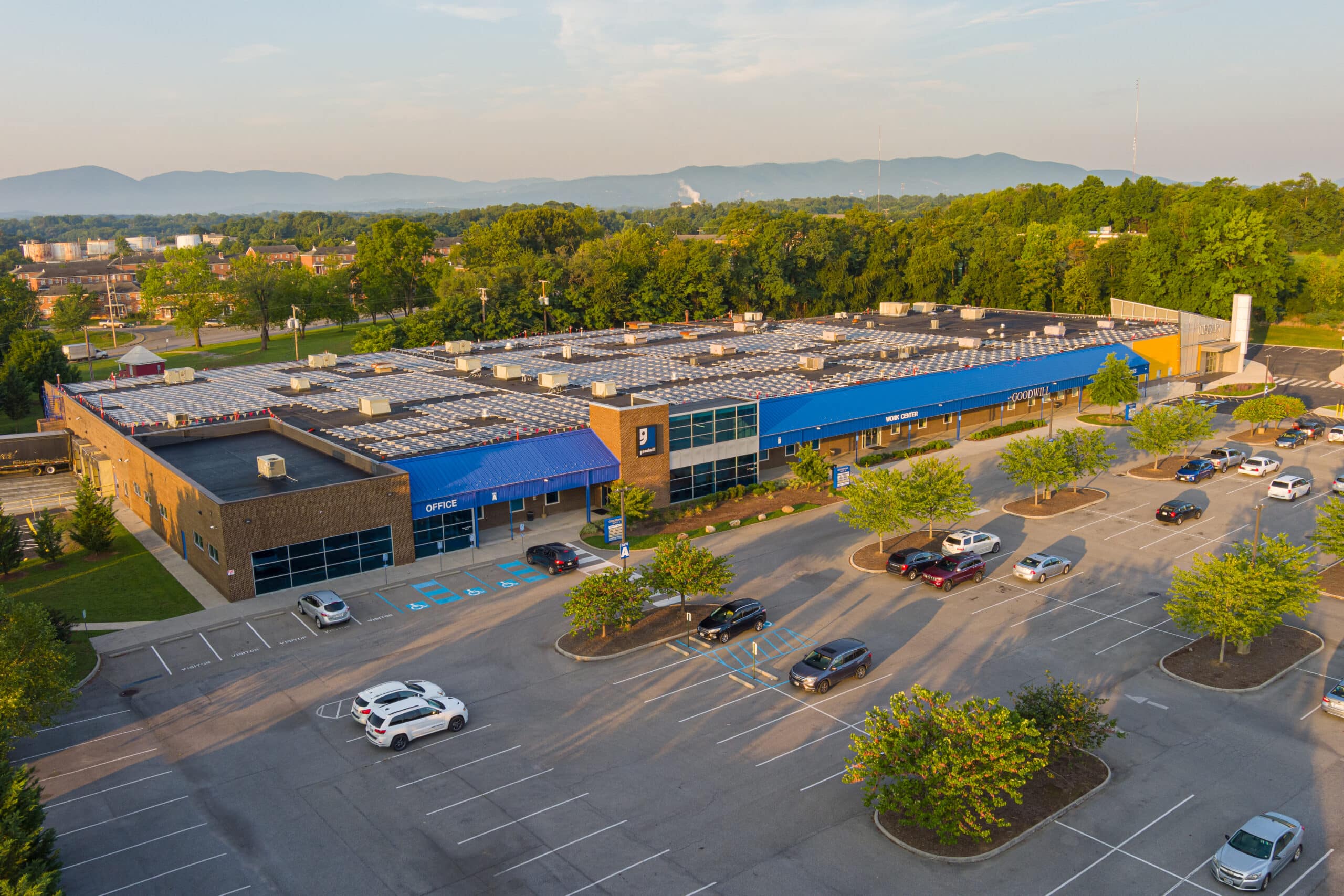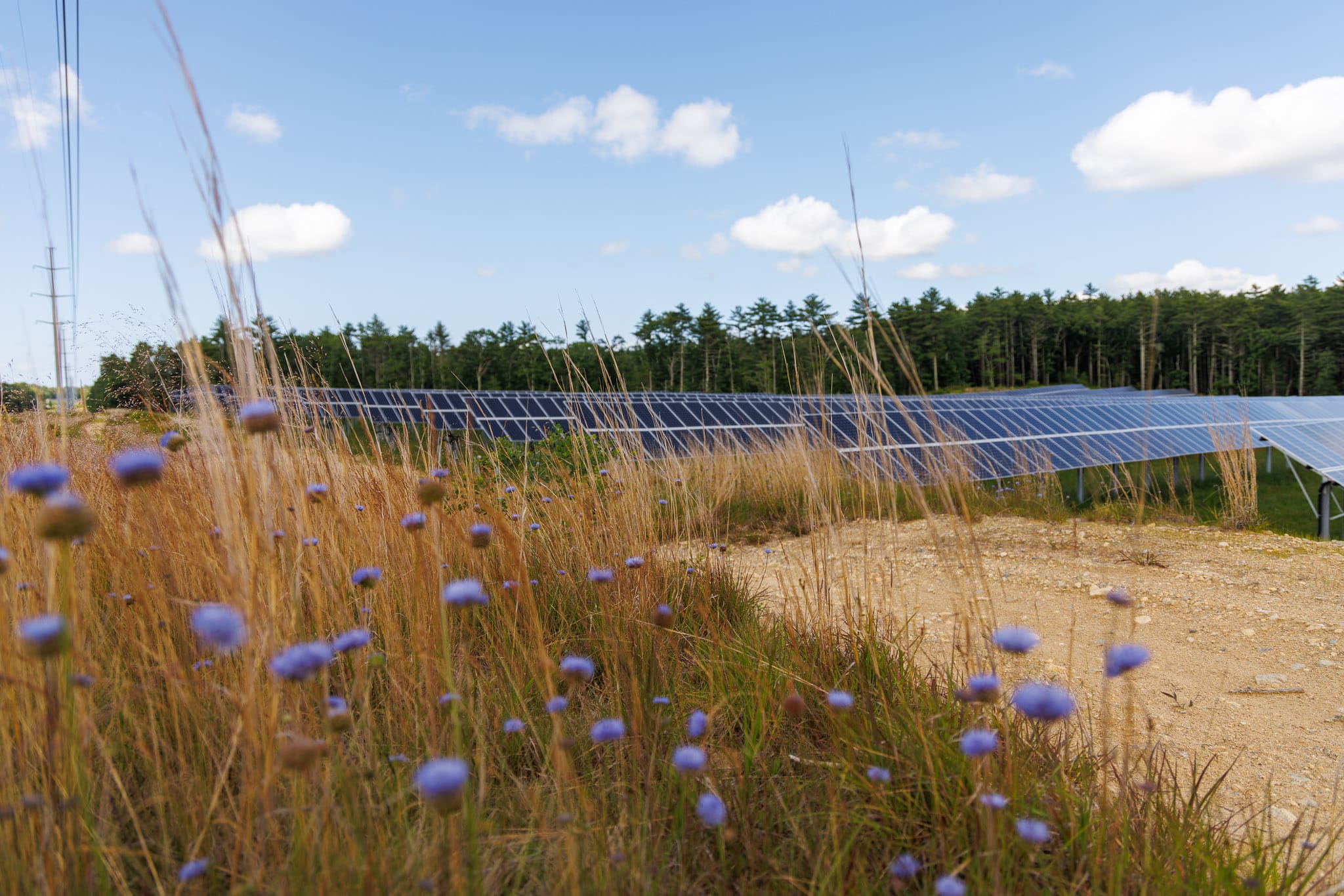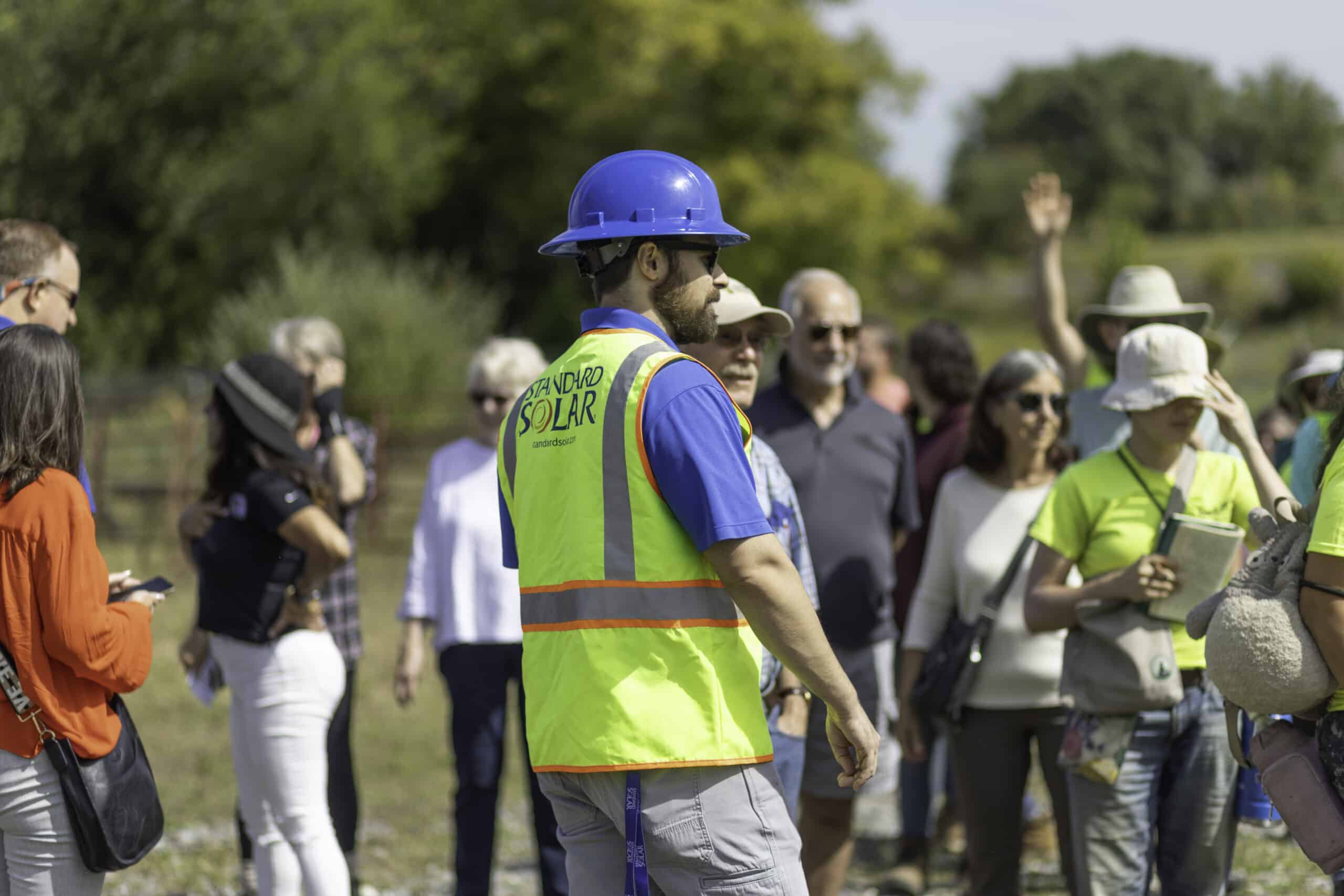NL IL - Old Stage
Village of Seneca, Grundy County, Illinois
The NL IL Old Stage solar project, located in the Village of Seneca, Grundy County, Illinois, is set to provide approximately 7.72 megawatts (MWdc) of renewable energy annually in Illinois. This project will contribute to the State’s goal of achieving 40% renewable energy by 2030.
Spanning 50 acres, more than 10,000 modules of this single-axis tracker solar array are expected to produce approximately 10,500 megawatt hours (MWh) of renewable energy annually, meeting the growing demand for sustainable electricity in the region and strengthening the reliability of the Illinois electricity mix. This will displace up to 4,083 metric tons of CO₂ each year.
This project will be a Community Solar Garden, aiming to expand access to solar energy for Illinois residents who cannot afford or do not have the space to install solar panels on their own properties, while reducing the cost of their electricity bills.
The project will contribute to the local economy by creating construction jobs and generating long-term economic benefits through increased tax revenue, community investments and solar grazing opportunities. Construction is scheduled to begin in November 2025, with operations expected to start by October 2026, marking an important step toward a cleaner and more sustainable energy future for all people in Illinois.
Energy generation in agricultural land: Agrivoltaics and solar grazing.
Agrivoltaics, also known as dual-use solar, refers to projects that utilize land for both agricultural purposes and solar photovoltaic electricity generation. Solar grazing involves livestock (sheep) grazing around the solar panels to maintain appropriate vegetation conditions. These practices are gaining popularity nationwide.
Vegetated grounds contribute to stable foundations by preventing erosion and increasing soil permeability. Planting native and pollinator-friendly plants supports biodiversity by providing food for local species, including bats, birds and insects.
The NL IL Old Stage includes a pollinator habitat management plan. The system has been designed with sufficient space to plant pollinator gardens along the perimeter and between the modules. To plant the site, a seed mix containing more than 20 native flower and plant species will be used. This vegetation strategy will enable various plants to bloom throughout the spring, summer, and fall seasons, providing food for pollinators from April to November.
However, if vegetation grows too tall, it can shade the panels or interfere with equipment, potentially increasing fire risk during dry summer months. Ongoing vegetation management is crucial to maintaining a site that is both environmentally beneficial and safe to operate.
As a sustainable solution for managing vegetation, the project will use sheep to graze the area. Standard Solar and the American Grazing Association will support the creation of long-term contracts with local farmers to bring their sheep to graze the site. The solar panels are installed at a height and spacing that ensures the sheep walk around the site comfortably and safely.
When sheep graze, they leave the root structure intact while directly fertilizing the ground, allowing the plant to regrow and continue its life cycle.
Benefits
Economic Impact
The project will create local construction jobs during its building phase, supporting the regional workforce. During its operations phase, the project will contract local farmers to use sheep to graze the area. Beyond its immediate job creation and rent payments, the project will generate substantial long-term economic value by contributing to the local tax base, helping to fund essential community services and infrastructure. By fostering economic growth and investing in renewable energy, the NL IL Old Stage solar project demonstrates a commitment to both environmental sustainability and the financial well-being of the community, making it a valuable asset for Grundy County’s future.
Clean Energy Impact
Solar panels do not emit greenhouse gases into the atmosphere, and they do not pollute the surrounding environment.
By producing approximately 10,500 megawatt hours (MWh) of sustainable electricity annually, it will provide a reliable source of carbon-free power to the Illinois grid. Using the EPA equivalencies calculator, this project would produce enough electricity to power 1,588 U.S. homes annually.
Offsets
The project is expected to displace approximately 4,083 tCO2e (Metric tons of Carbon Dioxide Equivalent) annually, based on the emissions profiles of the Mid-Atlantic and Midwestern grids (both operate in Illinois). Using the EPA equivalencies calculator, the carbon displaced from not burning fossil fuels would be equivalent to the carbon absorbed by more than 4,000 acres of U.S. forests in a year.
Location
Village of Seneca, Grundy County, Illinois
Project Size
7.72 MWdc
Timeline to operation
Construction began in November 2025, with operations expected to commence in October 2026.
The NL IL – Old Stage Solar Project will generate approximately 10,500 MWh of clean electricity each year—enough to power more than 1,580 homes and offset roughly 4,083 metric tons of CO₂ annually, equivalent to the carbon captured by more than 4,000 acres of U.S. forests.
Spanning 50 acres in Grundy County, this Community Solar Garden features over 10,000 single-axis tracker panels and incorporates agrivoltaics, pollinator habitats, and solar grazing. Designed for dual use, it supports soil health, biodiversity and local economic value through construction jobs, long-term tax revenue and partnerships with local farmers.
Location
Located in the Village of Seneca, Grundy County, Illinois, the NL IL – Old Stage Solar Project spans 50 acres and will generate 7.72 MWdc of clean energy. With agrivoltaics, pollinator plantings, and sheep grazing, it supports Illinois’ goal of 40% renewable energy by 2030 while enhancing grid reliability and community benefits.

Economic Impact
- The NL IL – Old Stage Solar Project will create local construction jobs during its build-out, supporting the Grundy County workforce and generating near-term economic activity across the region.
- Once operational, the project will generate long-term tax revenue, strengthening essential community services and infrastructure in Seneca and its surrounding areas.
- Through solar grazing partnerships with local farmers and long-term land leasing, the project delivers durable economic value, enhances rural productivity and reinforces the role of agriculture in the clean energy transition.

Goodwill Industries, VA, 0.5 MWdc

Port Newark Container Terminal, NJ, 3.29 MWdc
Clean Energy Impact
- The project will produce approximately 10,500 MWh of renewable electricity each year — enough to power more than 1,580 Illinois homes while supplying the grid with reliable, carbon-free energy.
- By offsetting an estimated 4,083 metric tons of CO₂ annually, the project reduces reliance on fossil fuels and directly supports Illinois’ target of reaching 40 percent renewable energy by 2030.
- As a Community Solar Garden, it expands access to affordable clean energy for residents who cannot install rooftop systems, lowering electricity costs and broadening participation in the state’s clean energy future.
Environmental Impact
- By avoiding emissions associated with fossil fuel combustion, the project reduces greenhouse gases and improves local air quality, thereby contributing to a healthier environment for the communities of Grundy County.
- Agrivoltaics and solar grazing practices help maintain vegetation, support soil stability and create a pollinator-friendly landscape that benefits local species, including insects, birds and bats.
- With native seed mixes and pollinator habitat management built into the design, the project demonstrates how renewable energy, agriculture and biodiversity can successfully coexist on working land.

Carver, MA, 2.8 MWdc
Project Location
Where is the NL IL Old Stage solar project located and is it visible from public roads?
The NL IL Old Stage solar project is in the Village of Seneca, Grundy County, Illinois.
Parts of the project may be visible from public roads. The project includes partial tree buffers. The project will not be visible from the built environment.
Who owns the land on which the NL IL Old Stage solar project is built?
The NL IL Old Stage solar project is built on private land leased by Standard Solar for system operation. This land will be leased for a period of 20 years (2024-2044), spanning the development, use, maintenance and decommissioning of the project, subject to optional and voluntary two ten-year renewal periods.
Safety & Operations
How do solar panels work?
Solar panels work by converting sunlight into electricity through a process called the photovoltaic effect. Each panel is composed of many solar cells, typically made of silicon, a material that can absorb sunlight. When sunlight hits these cells, it excites electrons, creating an electric current. This current is collected and directed through wires to power homes, businesses or the electrical grid. Solar panels are often installed in arrays to capture as much sunlight as possible, and they work best in sunny locations. By harnessing the sun’s energy, solar panels provide a clean, renewable source of electricity that does not produce harmful emissions.
What happens after the useful life of a solar project?
At Standard Solar, we are committed to sustainability throughout the entire lifecycle of our projects. The NL IL Old Stage solar project is expected to produce electricity for 20 years. After this time, when the project reaches the end of its operational life, well-established processes are in place to ensure responsible repowering, decommissioning and recycling.
Standard Solar has programs and policies in place to safely remove equipment, restore the land to its original state, and recycle materials such as glass, metal, and silicon from the solar panels. Such programs enable Standard Solar to minimize waste, prevent any burdens on the community and support the circular economy, ensuring that renewable energy remains a sustainable solution for future generations.
Do community solar projects make noise?
Solar projects are designed to operate quietly, making them an ideal option for generating renewable energy without disrupting nearby communities, agriculture, or wildlife. The primary components–solar panels–make no noise during operation. Some equipment, such as inverters or transformers, may produce a low humming sound (up to 60 dB) when converting solar energy into electricity. However, this noise is minimal and typically only noticeable when the equipment is close by (less than 10 feet). Overall, solar projects are a clean, quiet and community-friendly energy solution.
Since solar panels can only generate electricity during the daytime, the system is silent during nighttime.
Will the project produce glare?
The design of solar projects, including this one, minimizes the potential for glare. Solar panels are specifically engineered to absorb sunlight, not reflect it, as their primary function is to convert sunlight into electricity. Modern panels are coated with anti-reflective materials to further reduce any reflection. Additionally, projects undergo detailed studies and modeling during the planning phase to ensure they do not create glare that could affect nearby residents, drivers, aviation and wildlife.
Environment & Wildlife
How will the project manage erosion and stormwater during its lifetime?
This project has been designed with comprehensive measures to manage erosion effectively, control stormwater, and mitigate dust throughout its lifetime, ensuring minimal impact on the surrounding environment and no disturbances to wetlands or waterways. The project has all applicable local, state and federal permits and certifications.
Before construction, the site underwent a thorough assessment, and best management practices were implemented, including silt fences, sediment basins and buffer zones, to mitigate runoff during the building phase.
Once operational, the site will be stabilized with vegetation, including tall fescue grasses, conservation shade mixes (consisting of grasses), and a butterfly and hummingbird garden mix (comprising native flowers). Regular monitoring and maintenance will ensure that erosion, stormwater and dust control remain effective throughout the project.
What is the impact on area wildlife?
Standard Solar carefully considers the impact on wildlife and biodiversity in all projects to minimize disruption to local ecosystems. Detailed environmental studies are conducted to identify sensitive habitats and species, and to mitigate potential adverse impacts.
Consultation with the USFWS
- The Illinois Department of Natural Resources found no State-listed threatened or endangered species, Illinois Nature Preserves, or registered Land and Water Reserves in the vicinity of the project location.
- The U.S. Fish and Wildlife Service (USFWS) identified four endangered species that could potentially occur at the site: the Indiana Bat, the Monarch Butterfly, the Whooping Crane and Eastern Prairie Fringed Orchid.
- However, no critical habitats were found within the project area.
- The project has acquired all necessary documentation and guidance from the authorities to ensure that no species are negatively impacted by activities on site.
On-site survey
- Biologists surveyed the site and found that current plants do not provide suitable habitats for the listed species.
- No eagle nests were found, and local birds like the red-headed woodpecker and rusty blackbird do not breed in March.
- Tree clearing activities will not impact listed species, bald eagles, or migratory birds.
Creating a wildlife-friendly site
- Bat boxes will be installed along the perimeter.
- Under the site’s pollinator habitat plan, the site will be seeded with plants that will provide food and habitat for bees, beetles, butterflies and birds should they occur on the site.
- Wildlife-friendly fencing and vegetation buffers will be used to allow the safe movement of animals and birds.
- The site will be monitored to ensure minimal impact and compliance with biodiversity and ecosystem protection regulations.
Why are sheep on the site? Why not goats? Or cows?
- When sheep graze the solar field, they get fed, provide income to their owners and directly fertilize the soil.
- Sheep, unlike cattle, are smaller and gentler, allowing them to navigate the system with ease. This minimizes the risk of them bumping into system components, which could harm the animals and the infrastructure.
- Sheep, unlike goats, leave the plant’s root structure intact, allowing plants to grow back again. This helps keep the site vegetated for a longer time, enables the water cycle, and holds the soil together, which contributes to preventing erosion.
- Additionally, goats tend to like to climb vertical surfaces, which can be risky for their health and the integrity of the solar panels.


